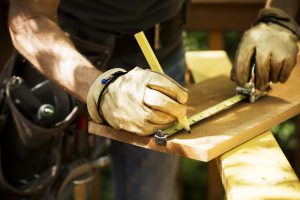
Every house creaks, squeaks and bangs, but some of these noises are enough to drive homeowners crazy.

Whether it’s your own house that’s getting on your nerves or your clients are complaining, there are often easy fixes to common home noises.
Creaking Doors: Perhaps most common are doors that bang, creak or rattle. Banging doors can be remedied with a simple cabinet door bumper. These are strips of felt, rubber or cork with adhesive on the back that can provide a cushion that prevents banging and rattling.
Another fix is to adjust the strike-plate tang. Check with the manufacturer to see how to do this—some require a flathead screwdriver, others need a wrench or pliers. Bending the tang towards the door should resolve the issue.
Ceiling fan: If the clinking of the pull chain against the fan is annoying, simply remove the chain, feed it through a ¼” plastic tube and replace.
Water heater: If your water heater is making a noise, it could indicate a buildup of sediment in the tank. Sediment buildup can reduce the longevity of your tank, so its best to clean it out. Water heater maintenance can reduce your energy bills and help your tank to last longer.
Turn the power to the water heater off at the breaker and switch the thermostat to “Pilot” for gas models. Turn off the water supply and leave the tank to cool. Locate the drain valve at the bottom of the tank and attach a hose to it. Put the other end of the hose into a bucket and open the valve, allowing the sediment to run out into the bucket.
Noisy soffits: If your soffits are rattling in the wind, it may be because they are not fitting tightly onto their wall-mounted channel. You can create a tighter fit by inserting a length of screen spline with a putty knife to ensure the soffit fits snugly in the channel and has no wiggle room for rattling.
Whistling vents: This is an easy fix—simply open the vent fins wider until the whistling stops.
Pipes: As pipes expand and contact with heating and cooling, they can tick groan or thump. You can reduce these noises by removing the straps that hold your pipes in place and lining the straps with felt or rubber. Put the straps back in place and enjoy a quieter home.
Pipes can also vibrate when water runs through them. Where they are touching framing members, this vibration can be transferred through the house. Spraying a little spray foam between the pipe and the framing member will take care of the problem.
Check to ensure the shut off valve is fully open as that can cause pipes to make a noise.
Sump pump: Check valves prevent water from flowing back into your home but can cause a thud. There are new ‘silent’ sump pump valves available which can be easily installed.
Washers and Dryers: Any major appliance can transfer vibrations during their cycles. Simply place anti-vibration pads under your appliances to prevent noise.
